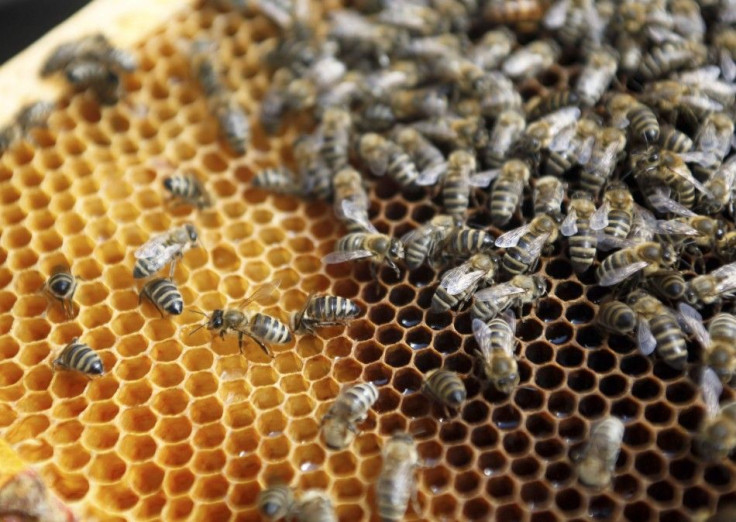Bee Colony Collapse Disorder Linked To Corn Insecticide

Colony collapse disorder, the disastrous disappearance of worker bees from a hive, is not well understood. Scientists have investigated such possible causes as parasites, cell phone towers and malnutrition, but new research from Europe has linked colony collapse disorder to the use of a corn insecticide.
Dead bees found in and around hives contained insecticides that kill insects but have a low toxicity for other animals, according to a recent study by Italian scientists. Corn is commonly treated with the insecticide found before being planted.
The insecticide used, a neonicotinoid, is very sticky, so corn seeds are mixed with talc to stop them from getting stuck in the planting machine. Excess talc is released during planting, expelling the insecticide into the environment, according to the study by Andrea Tapparo, Daniele Marton, Chiara Giorio, Alessandro Zanella, Lidia Soldà, Matteo Marzaro, Linda Vivan and Vincenzo Girolami of the University of Padua.
Results show that the environmental release of particles containing neonicotinoids can produce high exposure levels for bees, with lethal effects compatible with colony losses phenomena observed by beekeepers, the authors wrote.
The insecticides may be to blame for colony collapse disorder, according to the study.
Though beekeepers saw evidence of colony collapse disorder as early as 1972, it was first described in 2006 when beekeepers noticed worker bees mysteriously disappearing from hives in North America. Colonies cannot survive without worker bees and the rest of the hive dies soon after the workers disappear.
Researchers did not say that insecticides are solely to blame for colony collapse disorder, but said its use could play a role. Colony collapse disorder has not been seen in Italy since it banned neonicotinoid insecticides, according to the study.
In an effort to stop the pesticides from being released into the air and killing bees, researchers tested a variety of insecticide coatings and seeding methods but were unsuccessful.
Even a machine that was modified to send the expelled air straight down killed hundreds of bees foraging in the field.
Researchers said short of stopping use of neonicotinoid insecticides, figuring out a way to stop seeds from breaking apart inside the planting machine could help stem colony collapse disorder.
The study was published in Environmental Science & Technology on Jan. 31.
Bees are responsible for pollinating hundreds of crops worldwide. A third of U.S. crops rely of bee pollination, and the crops that do are worth over $15 billion, according to Bee Culture, a beekeeping trade magazine.
© Copyright IBTimes 2024. All rights reserved.











